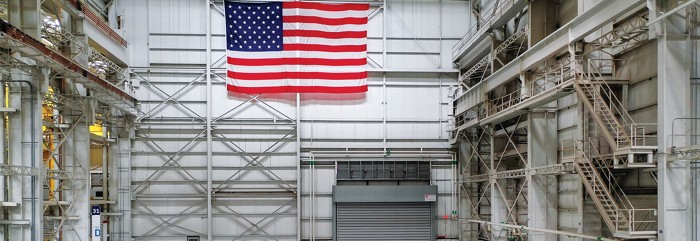Advertisement
Grab your lab coat. Let's get started
Welcome!
Welcome!
Create an account below to get 6 C&EN articles per month, receive newsletters and more - all free.
It seems this is your first time logging in online. Please enter the following information to continue.
As an ACS member you automatically get access to this site. All we need is few more details to create your reading experience.
Not you? Sign in with a different account.
Not you? Sign in with a different account.
ERROR 1
ERROR 1
ERROR 2
ERROR 2
ERROR 2
ERROR 2
ERROR 2
Password and Confirm password must match.
If you have an ACS member number, please enter it here so we can link this account to your membership. (optional)
ERROR 2
ACS values your privacy. By submitting your information, you are gaining access to C&EN and subscribing to our weekly newsletter. We use the information you provide to make your reading experience better, and we will never sell your data to third party members.
Policy
US deploys $4 billion more in cleantech subsidies
Tax credits benefit greenhouse gas reductions and clean energy at industrial sites
by Craig Bettenhausen
April 4, 2024
| A version of this story appeared in
Volume 102, Issue 11

The US government has picked more than 100 industrial sustainability projects for tax credits worth a total of $4 billion. The selections include $2.7 billion for clean energy deployment, $800 million for supply and recycling of critical materials, and $500 million for industrial decarbonization.
The credit program, known as 48C because of where it sits in the US tax code, was created in former president Barack Obama’s 2009 economic stimulus package. It received a $10 billion boost in the Inflation Reduction Act of 2022 championed and signed by President Joe Biden.
The Biden administration has announced almost $18 billion in federal support for cleantech projects in recent months, including $7 billion for hydrogen hubs, $6 billion for industrial decarbonization, and $750 million for expansions of hydrogen electrolyzer and fuel cell supply chains.
In a press release about the tax credits, the US Department of Energy says applications will open soon for a second round of selections. Because of a quirk in the 2009 law, the administration is not allowed to release a full list of its selections, though the companies are free to make themselves known to the public.
One recipient that has come forward is the graphite maker Novonix, which says it will be eligible for $103 million in tax credits to support scale-up at its facility in Chattanooga, Tennessee. Novonix’s graphite is used as an anode material in lithium-ion batteries.
CEO Chris Burns says the firm’s electrical induction furnaces generate significantly fewer greenhouse gas emissions than kilns used in conventional graphite production lines, which burn fossil fuels.
Burns says the Inflation Reduction Act not only boosted the funding available for the 48C program but also made the tax credits easier to use by adding a direct-pay option—similar to a refundable tax credit in personal tax filings—and allowing some entities to sell the credits. Before, companies could claim the credits only against their real, internal tax burden, limiting the credits’ utility for start-ups that are not yet generating a profit.
The announcement “stresses the overall strategic vision that these tax credits represent—a drive to move the energy sector forward through investment in high-end technology and practices that prioritize efficiency and reduced environmental impact,” Burns says.
Another chemistry-heavy firm to publicize being chosen is MP Materials, which says it will receive $58.5 million in support of what it calls the US’s first fully integrated facility for manufacturing rare earth magnets. The plant, already under construction in Fort Worth, Texas, will convert a mined blend of neodymium and praseodymium oxide into a neodymium-iron-boron alloy and finished magnets.
The government considers the magnets critical raw materials for infrastructure and national defense, but “more than 90% of the world’s NdFeB magnets are produced in China,” and the US today is entirely dependent on imports, MP Materials says in a press release.


Join the conversation
Contact the reporter
Submit a Letter to the Editor for publication
Engage with us on Twitter